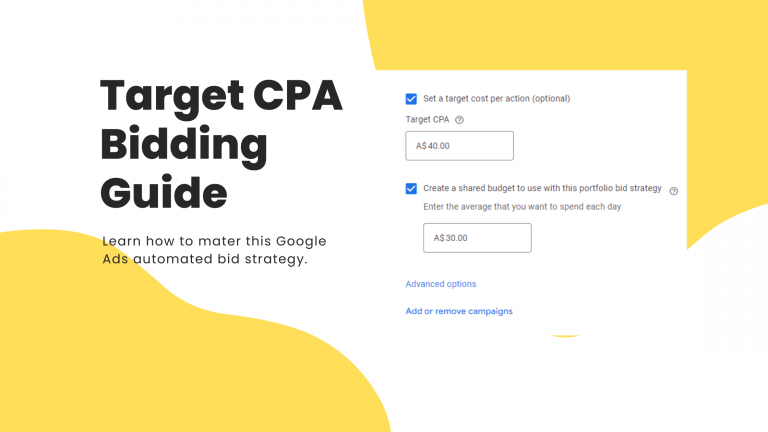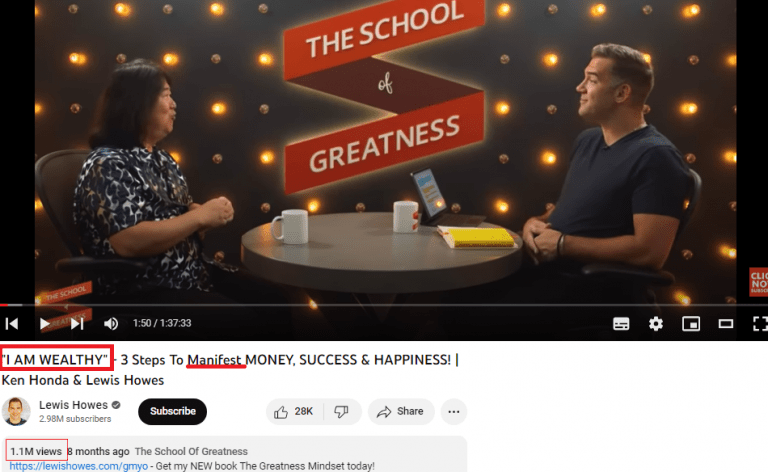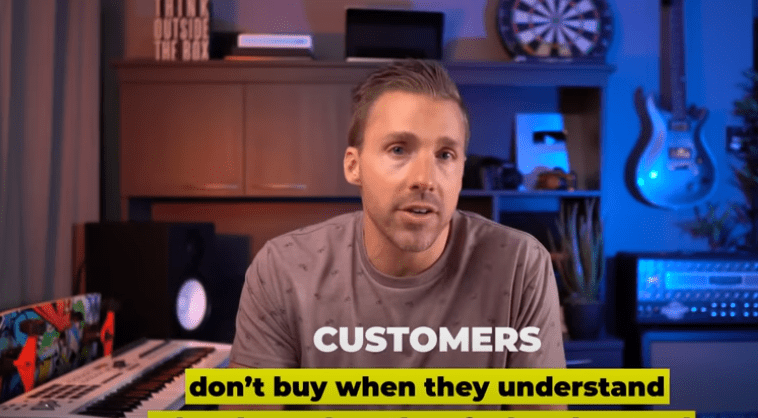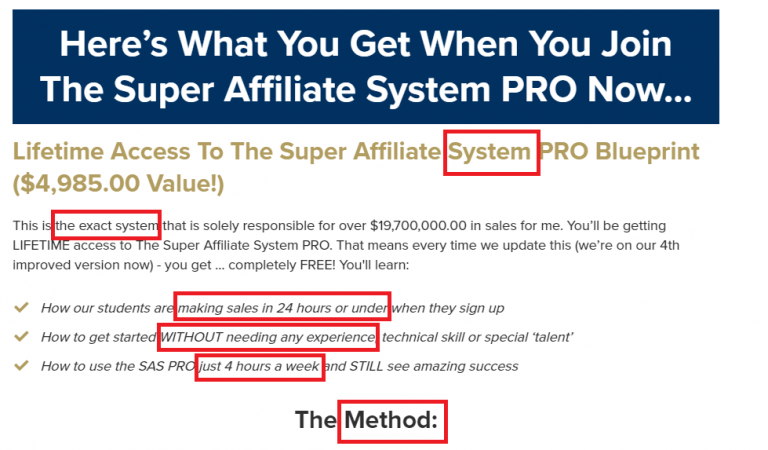How To Effectively Communicate Benefits In Marketing
If you’ve ever spent time studying marketing and copywriting, you’ve likely heard about the importance of benefits.
Simply put, when someone is looking to buy a product or service, they want to know what’s in it for them.
You’ve probably heard about the differences between features and benefits. If not, take a look at this video from Adam Erhart explaining the difference.
Here’s the problem…
Even if you understand why it’s important to highlight benefits in your marketing, you’re probably not doing it as effectively as you could.
Most businesses fail to properly communicate their benefits to potential customers.
Your products and services from your competitors probably offer very similar benefits to yours. The way to beat them is by presenting these benefits to the market better than they do.
In this post, I’m going to reveal some common mistakes that businesses make when presenting the benefits of their product. Then I’ll explain how to avoid making those mistakes.
Once you know how to effectively communicate benefits in your marketing, you can apply it to all areas of your marketing.
Your Facebook ads, your website, your social media posts, your landing pages, your emails and so on…
In this blog post, you will learn..
- An easy formula you can use for communicating benefits in simple terms
- Where to place your benefits for maximum visibility
- A vital mistake most businesses make that destroys the effectiveness of their benefits
- A simple way to reinforce benefits to potential customers
- How to make the impact of each benefit more powerful
1. Present Your Benefits In Plain English
When trying to communicate benefits, rule number one should be – keep it simple. Don’t confuse your readers with fancy jargon or complicated terms. Speak their language and make it easy for them to understand the benefits you offer.
Here’s how to write in a way that clicks with people:
Break it down: Take complex ideas and break them into simple, everyday words. No need for confusing technical language. Keep it clear and straightforward, so that even someone who knows very little about your product would understand it.
Paint a picture: Show, don’t tell. Use real examples and relatable stories to illustrate your benefits. Help your readers visualize how your product or service can solve their problems. Make it crystal clear how you can meet their needs.
If you’re ever struggling to convey your benefits in simple terms, use the following formula:
“We do X so you can Y.” Or “Our product does X so you can Y.”
For example, a finance broker might say “we compare different loans for you, so you can get the best interest rate.”
2. Make Your Benefits Stand Out
Don’t let your benefits get lost in the crowd. When people stumble upon your website, ads, or social media, they should immediately see what’s in it for them.
Here’s how to give your benefits the attention they deserve:
Shout it loud: Put your key benefits front and centre. They should be impossible to miss. Headlines, subheadings, bullet points—they all play a part. In your ads, make sure they catch the eye and demand attention. On social media, use killer visuals and snappy captions to stop the scroll.
Pictures: A picture speaks volumes. Visuals can drive your benefits home like nothing else. Show off your advantages with images, videos, or infographics. Let your visuals do the talking and leave a lasting impression.
Benefit Driven Headlines: Many people who visit your website or a landing page, will only read the headline. Maybe the subheadlines too if you’re lucky. With the visibility they get, headlines are often the best chance you have to get your benefits in front of people.
Take a look at this example from video software tool Doodly. See how they present numerous benefits in one single headline.

By making your benefits stand out, you’ll grab attention, pique interest, and keep your audience hooked.
3. Don’t Be Generic
Don’t be another face in the crowd. Stand out by ditching generic terms and tired clichés when you talk about your benefits. Phrases like “outstanding customer service” or “great quality” have lost their magic because everyone uses them.
When visitors to your website or viewers of your ad see you using the same generic phrases as competitors, they will just gloss over it.
Instead of saying “outstanding customer service,” try something more unique like “Creating Raving Fans, One Customer At A Time.” Or “The Dream Team Of Customer Satisfaction.”
But also don’t try to be too clever. Going back to tip #1, your benefits still need to be easy to understand.
Follow these tips to avoid falling into the trap of generic marketing..
Get specific: Forget the generic fluff and focus on what truly sets you apart. Highlight unique features, benefits, or guarantees that make you special. Be specific about what you bring to the table. Give customers concrete reasons to choose you.
Inject some personality: Create a unique brand voice that you can use to communicate your benefits. Doing so allows you to communicate the same benefits as your competitors but without sounding generic.
By ditching the generic talk and embracing your uniqueness, your marketing message will be unforgettable.
Recommended Reading: 5 Website Tips For Small Businesses
4: Repeat Your Benefits
The power of repetition is often overlooked in marketing. By repeating your benefits, you etch them into the minds of potential customers.
This is related to a phenomenon known as the illusory truth effect.
The illusory truth effect means that people are more likely to accept something as truth, after repeated exposure to that idea.
In my review of the Sell Like Crazy book sales page, I explain how the writer continually repeats the same phrases to take advantage of repetition and the illusory truth effect. Consistent repetition across different marketing channels ensures your value sticks.
Here’s how to make it stick:
Say it again and again: Don’t be shy about repeating your benefits. Hammer them home in your website copy, ads, social media posts, and emails. But don’t be a broken record—find different ways to rephrase and reiterate. Keep it fresh, but keep it consistent.
Stay on their radar: Don’t let them forget. Reinforce your benefits with reminders, follow-ups, and gentle nudges. Stay present in their minds so they can’t overlook what you bring to the table.
Multi-platform: Don’t just use your website to convey benefits. Every marketing platform can be used to reinforce what’s special about your business. Use social media, email, paid media, offline marketing channels to get the message across.
By repeating your benefits, you create a lasting impression that leads to action. Remember, repetition is the key to success.
5. Make People Value Your Benefits
Promoting a benefit is useless if your target audience doesn’t value that benefit.
Oftentimes, someone won’t value the benefit because they don’t fully understand how it will improve their life.
Don’t assume that potential customers will understand the true value of the benefits as you do.
Here’s an example. A professional, residential cleaning service is likely to say that one of their main benefits is providing people with a clean home.
They might say on their website something like “We’ll leave your home crystal clear.”
And while most people do value having a clean home, a lot of people may not understand how beneficial a clean home can be.
The cleaning service can make this benefit more impactful by communicating why a clean home is important.
For example…
- Health and hygiene reasons
- Improved air quality
- Better mental well being
Each of these points could be expanded on further to really emphasise the value of a clean home.
In Summary
Presenting the benefits of the product or service you offer is clearly important. But most businesses fail to effectively communicate their benefits.
The five ways to make your benefits more effective are:
- Make your benefits easy to understand and avoid complex language.
- Feature your benefits prominently in your marketing
- Avoid generic terms and cliches when you’re presenting your benefits
- Use repetition to reinforce benefits to potential customers
- Highlight the real value of each benefit to customers







